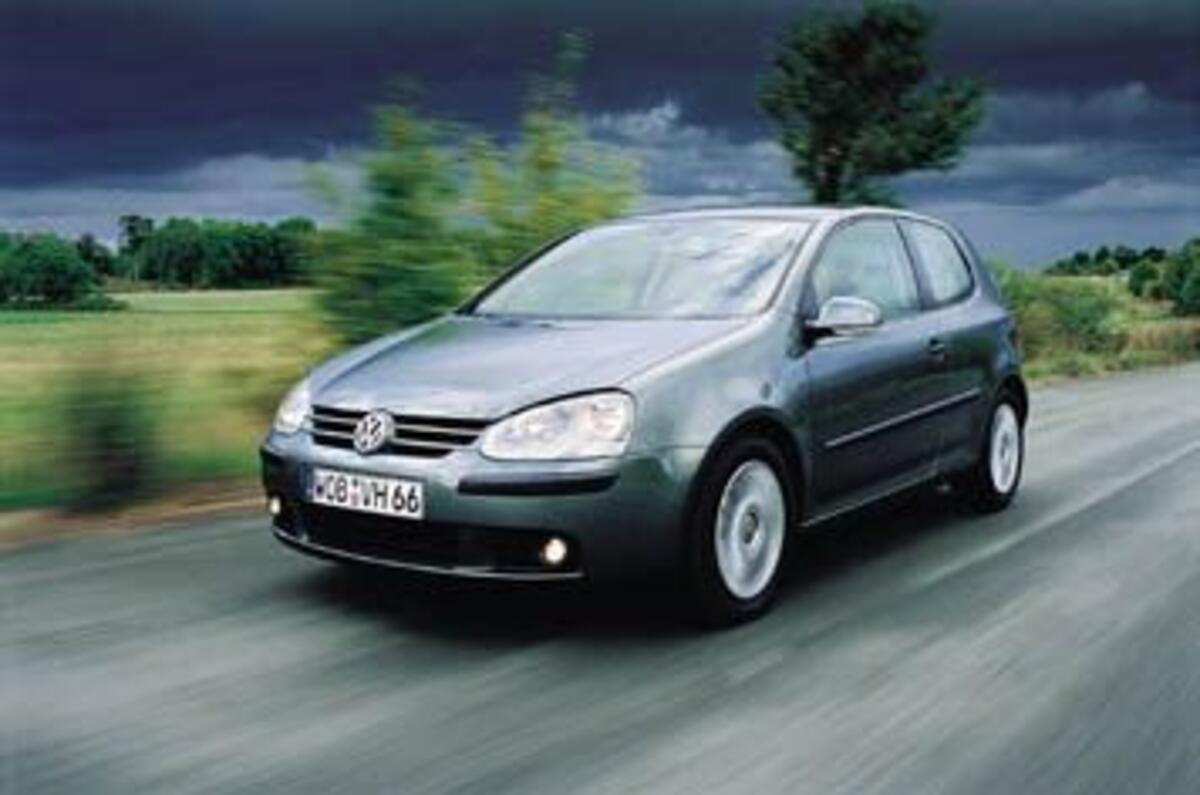No car has a wider audience than the Golf. The universal appeal of the classless quality hatch transcends all rivals, whose makers both resent and respect the subculture that’s grown up around Volkswagen’s defining best-seller. The new Golf looks utterly different, yet reassuringly the same, a calculated, deliberate, reinterpretation of a design theme that began nearly 30 years ago.
So the arrival of the fifth edition is a momentous and anxious time for Wolfsburg, which plans to build 600,000 of the trademark cars in 2004. Of course, VW goes through the same concerns with every generation, but that doesn’t make it any the less worrying. The question, as always, is will Europe’s car buyers accept yet another generic Golf? After testing the new car in Germany, we’d ask, why not?
The Golf is the premium hatch in the eyes of most customers, positioned above the rival Focus/Mégane/Astra et al, a perception only reinforced by the Golf Mk4’s expensive interior, a feel-good experience that shifted the car to a higher plane. Now much imitated, we wondered how VW could possibly make the interior any more covetable. This, and the questions surrounding VW’s hype that the new four-link rear suspension adds much to the driving experience, marked this as one of the year’s most fascinating launches.
First impressions upon opening the driver’s door are positive. The interior still looks and feels impressive, solid, and more expensive than the competition. An exemplary driving position, the clarity of the controls, the obvious quality and comfort of the steering wheel, the low scuttle height, all contribute to a feeling of well-being.
Look closer, however, and yes, it seems some cost has been squeezed out of the interior. Hard plastic appears on the lower door panels and at the back of the centre console: the front seat runners are no longer on the sides of the sills and central tunnel but conventionally located under the seats, where their black slides are all too visible; the sunglasses holder above the interior mirror feels flimsy and is only partially lined Still, by the standards of the class, it remains a premium and beautifully crafted interior. Stretching the wheelbase by 67mm to 2578mm adds 52mm to rear seat legroom, to transform one perennial Golf criticism into a virtue, yet boot capacity has risen 20 litres to 350 litres to match the Focus.
You will know the new Golf shares its genes with the Touran and Audi’s new A3 and a variety of yet-to-be seen Seat and Skoda models. The commonality extends to the excellent new four-valves per cylinder 2.0-litre TDi engine fitted to the test car and the four-link, independent rear suspension, hastily developed after VW first drove the Focus.
No escaping the diesel rattle and it’s harsher than the identically engined A3, but a broad power band from just over 1500rpm almost to the 4500rpm red line means the Golf feels strong, quick and effortless. No wonder the combined consumption is an excellent 52.3mpg.
But how does the Mk5 drive? Does the now electro-hydraulic steering match the precision of the Focus? But where the Mk4 felt stodgy, even wallowy, the new model is a dramatically more accurate, better-riding, more fluid-handling car.
The transformation starts with steering that feels much quicker than the 3.0 turns lock-to-lock indicates. In comparison with the old car, the steering is beautifully weighted and accurate – the car feels planted and inspires confidence. Despite the sheer grunt of the engine, torquesteer is never an issue, the fully electrical system just banishes any rawness, smothering any kickback, though that also means there is essentially no feel when you start to push on and progress into the chassis’ mild, if inherent, understeer.




















Add your comment